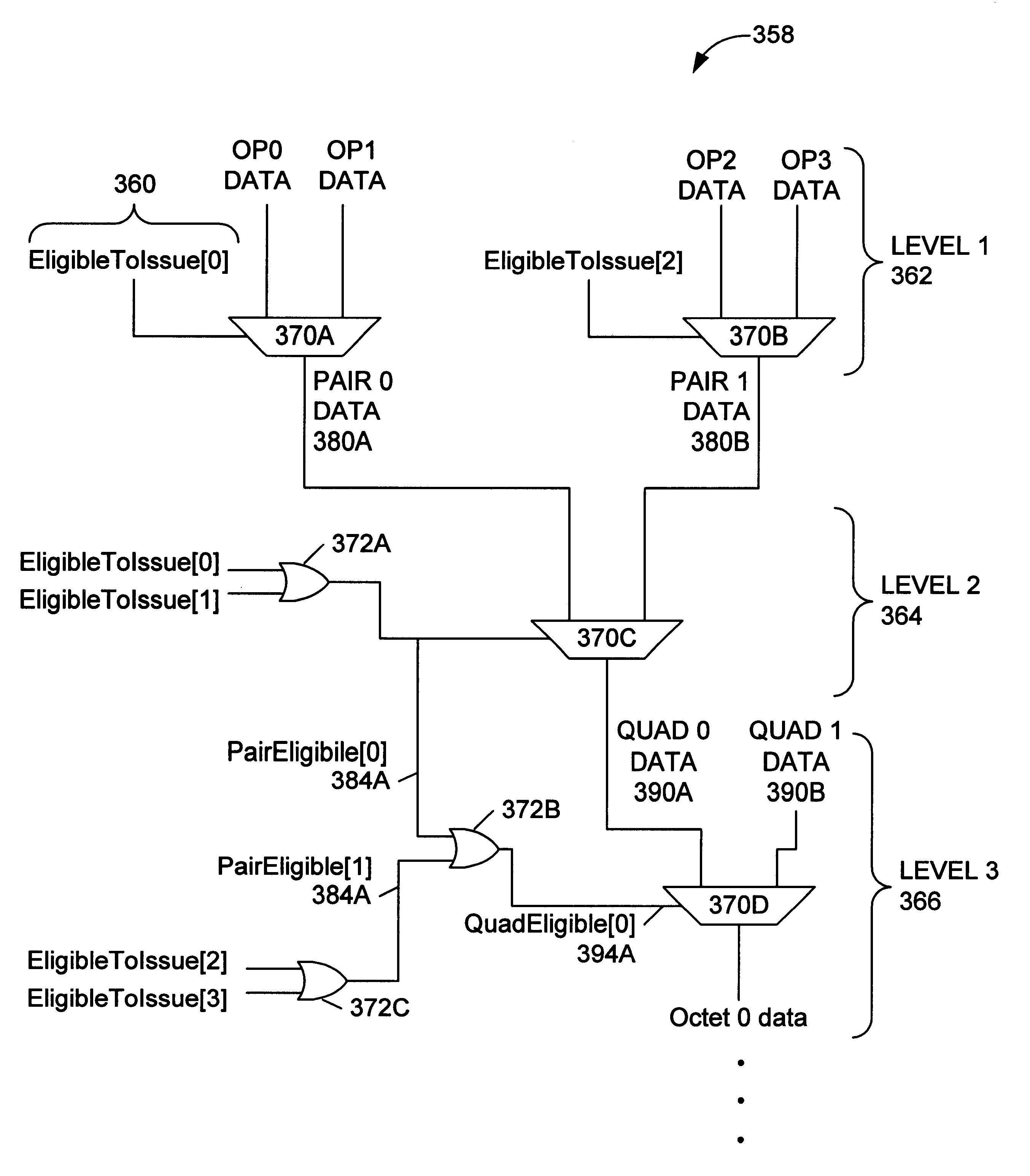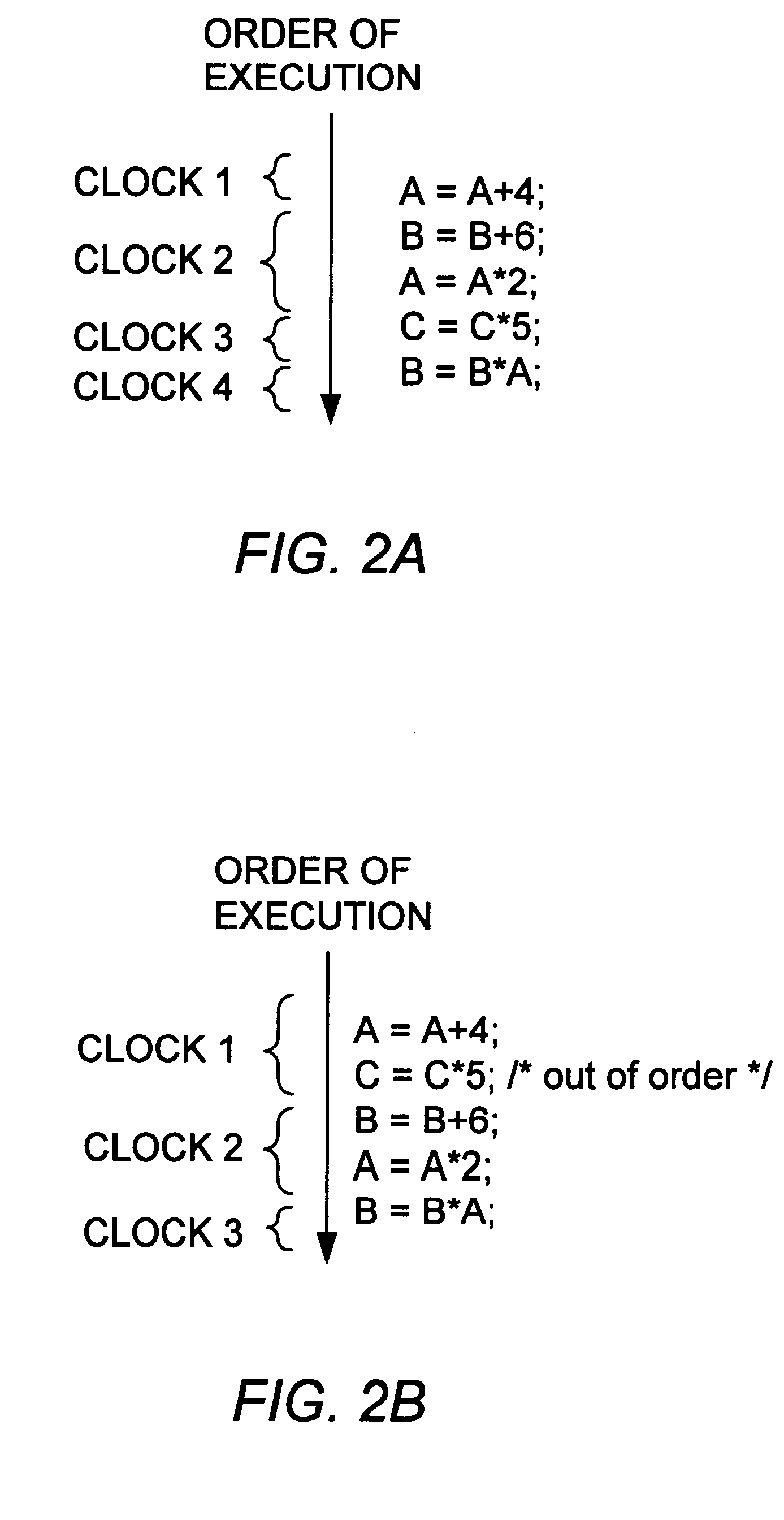Rapid selection of oldest eligible entry in a queue
a technology of queues and queues, applied in the field of microprocessors, can solve the problems of instruction queue 314 running out of storage locations, reducing the performance of instruction queue 314 in some embodiments, and the control logic for shifting each instruction may be fairly complex
- Summary
- Abstract
- Description
- Claims
- Application Information
AI Technical Summary
Problems solved by technology
Method used
Image
Examples
Embodiment Construction
Before describing the details of the improved instruction queue, a general description of a microprocessor and floating point unit configured to utilize the instruction queue is provided.
Turning now to FIG. 4, a block diagram of one embodiment of a microprocessor is shown. Microprocessor 10 includes a prefetch / predecode unit 12, a branch prediction unit 14, an instruction cache 16, an instruction alignment unit 18, a plurality of decode units 20A-20C, a plurality of reservation stations 22A-22C, a plurality of functional units 24A-24C, a load / store unit 26, a data cache 28, a register file 30, a reorder buffer 32, an MROM unit 34, and a floating point unit (FPU). Elements referred to herein with a particular reference number followed by a letter may be collectively referred to by the reference number alone. For example, decode units 20A-20C may be collectively referred to as decode units 20.
Prefetch / predecode unit 12 is coupled to receive instructions from a main memor...
PUM
 Login to View More
Login to View More Abstract
Description
Claims
Application Information
 Login to View More
Login to View More - R&D
- Intellectual Property
- Life Sciences
- Materials
- Tech Scout
- Unparalleled Data Quality
- Higher Quality Content
- 60% Fewer Hallucinations
Browse by: Latest US Patents, China's latest patents, Technical Efficacy Thesaurus, Application Domain, Technology Topic, Popular Technical Reports.
© 2025 PatSnap. All rights reserved.Legal|Privacy policy|Modern Slavery Act Transparency Statement|Sitemap|About US| Contact US: help@patsnap.com



